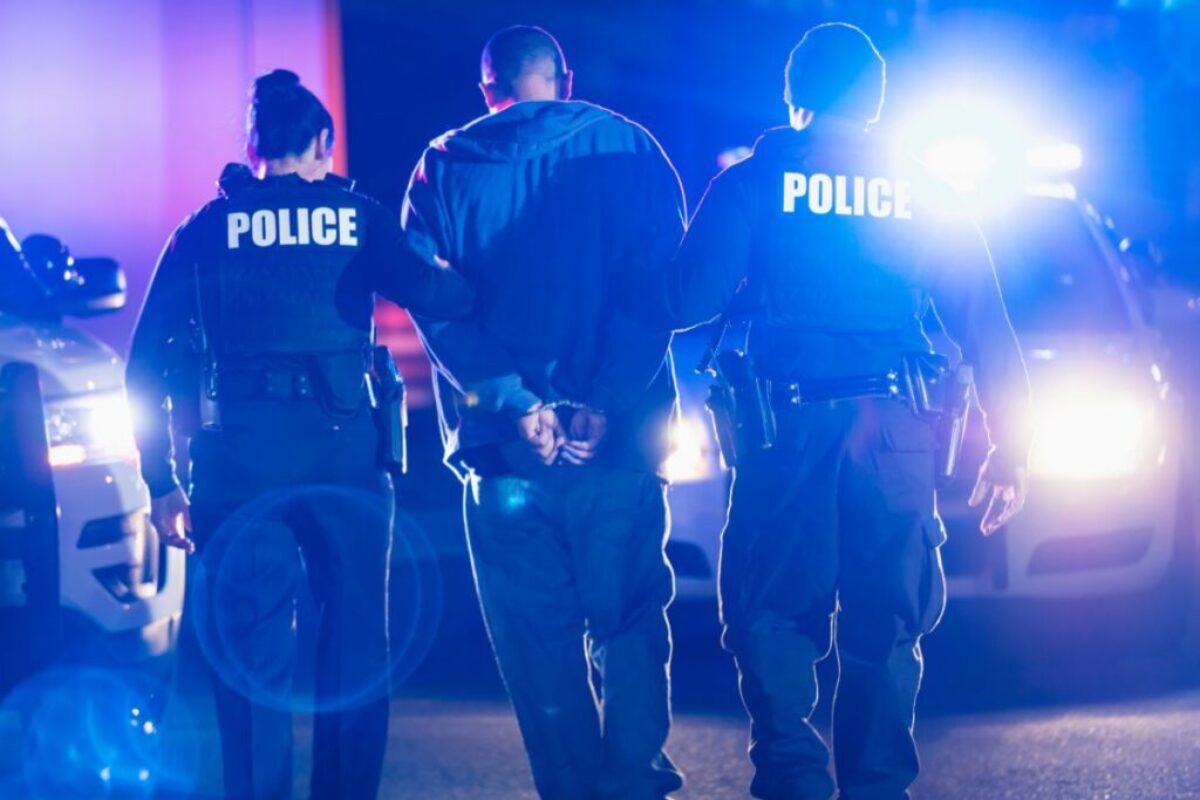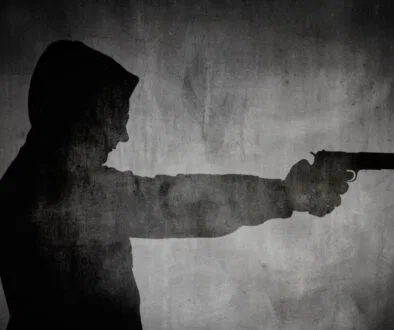What Does Brandishing A Weapon Mean? Is It Illegal?

Published May 27, 2024
Brandishing a weapon is a heavy offense that involves displaying or using a weapon in a threatening manner. This crime’s definition and penalties can vary significantly across different states. Understanding what constitutes brandishing a weapon is essential for firearm owners and carriers.
In this article, we’ll explore the complexities surrounding brandishing a weapon. We’ll look at the legal definitions. We’ll also cover the results of such behavior and the possible consequences one might face. By doing so, you’ll thoroughly understand this frequently misunderstood subject.
Brandishing A Weapon Meaning
Brandishing a weapon involves drawing, displaying, or using a firearm or deadly weapon in a way that’s threatening, angry, or disrespectful in the presence of another person.
For instance, the elements of the offense of brandishing a firearm or deadly weapon in California include:
- Drawing or showcasing a firearm or deadly weapon in someone else’s presence
- Doing so in a threatening, angry, or rude manner or using it in a fight or quarrel
- Not acting in self-defense or defense of another person
In some states, including California, the focus is on how the weapon is displayed. Other states emphasize whether people felt fear as a result. In such states, a person may face multiple counts of brandishing a weapon if pointed at many individuals.
In California and other states where brandishing a weapon is criminalized, the behavior includes:
- Using a firearm or weapon in a fight
- Pointing a firearm, but not straight at someone
- Pointing a firearm at someone, even if it’s subsequently holstered
- Looking at someone and lifting your shirt to reveal a gun
- Standing on a public sidewalk with a pistol in hand
- Making slashing maneuvers at someone while holding a knife
- Holding a screwdriver in a standoff scenario with police
- Waving a loaded pistol and refusing to put it away when asked
This conduct is taken seriously and is punishable by law to protect public safety and maintain order.

Is Brandishing A Weapon A Felony?
Brandishing a weapon can be a misdemeanor or felony. This depends on the situation and state laws.
In California, this offense is generally classified as a misdemeanor. A person is punishable by up to one year in county jail and a fine. However, the charge can become a felony due to certain conditions, such as if it occurs at a school, in front of minors, or during another crime.
Brandishing a weapon can bring felony charges. They carry much harsher penalties, such as several years in state prison and higher fines. The act’s intent and the weapon’s type are also critical. Police and the courts consider them during prosecution.
Does It Have To Be A Deadly Weapon?
The answer depends on the state. For instance, the term can refer to a firearm or any deadly weapon in California. A “deadly weapon” is any object. It’s used in a way that, given the circumstances, can cause death or severe harm.
California courts categorize weapons into three groups:
- Inherently deadly weapons, which are always unlawful to brandish
- Weapons that aren’t inherently deadly but can become so based on their use and the intent of the person wielding them
- Objects that are not considered deadly weapons
For a weapon to be inherently deadly, it must be designed to be lethal or dangerous. In California, it’s always illegal to brandish inherently fatal weapons. These weapons include firearms, even if unloaded, and dirks or daggers.
In other states, only firearms are considered for brandishing laws. For example, in Virginia, a weapon must be a firearm or one operated by air or gas. Meanwhile, in Michigan, the weapon must be a firearm and brandished in public for it to be deemed a criminal act.
What Are The Penalties For A Conviction?
The penalties for brandishing a weapon can include:
- Jail time. This can range to 3 years if prosecuted as a felony in California. The duration depends on many factors. These include the severity of the act, whether the weapon was used to threaten, and the defendant’s criminal history. For instance, a first-time offender might receive a lighter sentence.
- Fines. In California, penalties for a misdemeanor can reach $1,000. However, these fines can be higher depending on the circumstances. For example, if the act injured or distressed the victim, the court may impose stiffer penalties.
- Possible additional charges. The defendant might face more charges if the act involved multiple victims or worse circumstances. This could include charges related to assault or intimidation. Committing the act in a school zone or during a domestic dispute can result in more severe charges.
Frequently Asked Questions About Brandishing A Weapon
1. Can I be convicted for related offenses?
Yes, individuals charged with brandishing a firearm may also face more charges, such as:
- Assault with a deadly weapon
- Unlawful possession of a concealed firearm
- Wanton endangerment
- Carrying a weapon without a license
- Felon in possession of a firearm
In some states, like West Virginia, a person can be convicted of brandishing a weapon. This can happen along with other offenses from the same incident.
2. Can you brandish a gun on your property?
The legality of brandishing a firearm on private property largely hinges on the context. It may be deemed lawful if used in self-defense against an imminent threat. However, menacingly displaying a weapon without just cause could lead to criminal charges.
3. Is open carry considered brandishing?
In regions where open carry is allowed, showing a weapon is not brandishing as long as it is not threatening or aggressive. The critical factors in determining whether an act qualifies as brandishing are the intent and manner of display.
4. Is self-defense a valid legal defense for brandishing a weapon?
Self-defense can serve as a legitimate legal defense against charges of brandishing a weapon if:
- The individual had a reasonable belief of imminent danger
- The force used was necessary to prevent harm
For instance, pointing a firearm at an armed trespasser may be justified if it’s done to protect oneself or others.
5. Is there a difference between a deadly weapon and a firearm?
The terms “deadly weapon” and “firearm” have distinct meanings in legal contexts. While a firearm is inherently a deadly weapon, not all deadly weapons are firearms. For instance, a baseball bat can be classified as a deadly weapon depending on its use, but it’s not a firearm. This difference is crucial. Brandishing a firearm often gets harsher penalties than brandishing a non-firearm deadly weapon.

Navigating The Complexities Of Brandishing A Weapon
Understanding weapon handling is complex. Responsible gun owners must grasp it and the legal risks it brings. This entails knowing when and how to use a firearm safely and understanding legal constraints. Knowing local, state, and federal laws and possible legal defenses helps people navigate these complex legal areas.
Advertisement
Save 90% Per Minute On Jail Calls With Us
US prisons charge lots of money per minute for long distance inmate calls. The loved ones of inmates are left to pay this bill. For a ten minute phone call you may find yourself paying over one hundred dollars. With SecurTel, you can reduce this charge to a fraction of the cost and only pay the local calling rate. Make calls from across the US or internationally for the local rate and help your family stay connected during a difficult time. Learn more about how to sign up for inmate calls here.

This Content Is Fact Checked
We have conducted thorough fact-checking on this content in-house. Get detailed insights into our website’s editorial standards by clicking here.

About The Author
Hello! I’m Corinne, a nursing graduate from Riverside College with a flair for writing. Thanks to the thorough research into each piece, my work stands out for its quality and accuracy. I believe in the power of storytelling to connect with people from all walks of life.



